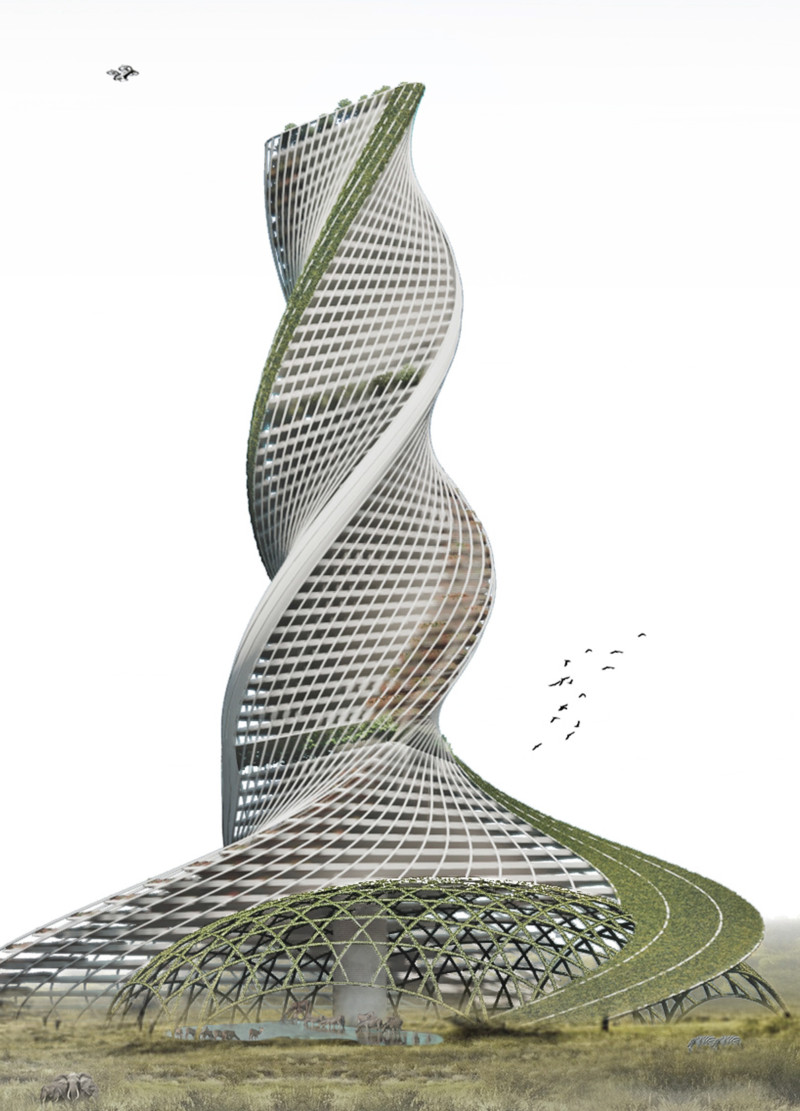5 key facts about this project
The Biophilia Tower exemplifies a modern approach to sustainable urban architecture. Focused on creating a harmonious relationship between occupants and their environment, the project combines residential, communal, and natural elements within a single, cohesive structure. Strategically designed to address the challenges of urban density, the tower emphasizes the importance of integrating nature into daily life, promoting both well-being and environmental responsibility.
The primary function of the Biophilia Tower is to provide living spaces that foster community interaction while enhancing the occupants’ connection to nature. The design incorporates residential zones, communal areas, and landscaped features that exist both on the horizontal and vertical planes. This multifaceted approach encourages a sense of community and facilitates social engagement among residents.
Natural elements are woven throughout the building's design. The spiral form of the tower allows for optimal light and airflow, enhancing energy efficiency. The façade employs a lattice system made of recycled composite materials, which serves not only an aesthetic function but also allows for passive environmental control. This feature is particularly relevant in mitigating heat gain and enhancing daylighting within the spaces, thereby reducing reliance on artificial lighting.
The integration of water capture technology further differentiates the Biophilia Tower from conventional structures. By harvesting rainwater and using it within the building, the tower promotes self-sustainability and reduces the impact on municipal water supply systems. This innovative approach highlights the project's commitment to responsible resource management and ecological preservation.
Vertical gardens are another key characteristic of the design. They serve both functional and aesthetic purposes by supporting biodiversity and improving air quality. These gardens provide residents with opportunities to engage with nature directly, promoting a therapeutic environment that enhances the quality of urban life. The design also incorporates green roofs, which contribute to thermal insulation and stormwater management while creating accessible, green spaces for residents.
The architectural plans illustrate a careful delineation of spaces that aligns with the building's functional goals. Architectural sections reveal the efficient flow of air and occupants throughout the tower, ensuring that natural ventilation is maximized in all spaces. The careful arrangement of public and private areas underscores the goal of fostering a close-knit community without sacrificing individual privacy.
The Biophilia Tower stands as a modern example of how architecture can respond to contemporary urban challenges. Its emphasis on sustainability, alongside innovative design features, makes it a noteworthy project in the realm of urban residential development. For a deeper understanding of the architectural designs and the thoughtful implementation of these ideas, consider exploring the detailed architectural plans and sections of this project. These elements provide valuable insights into the design philosophy and operational strategies employed throughout the Biophilia Tower.























